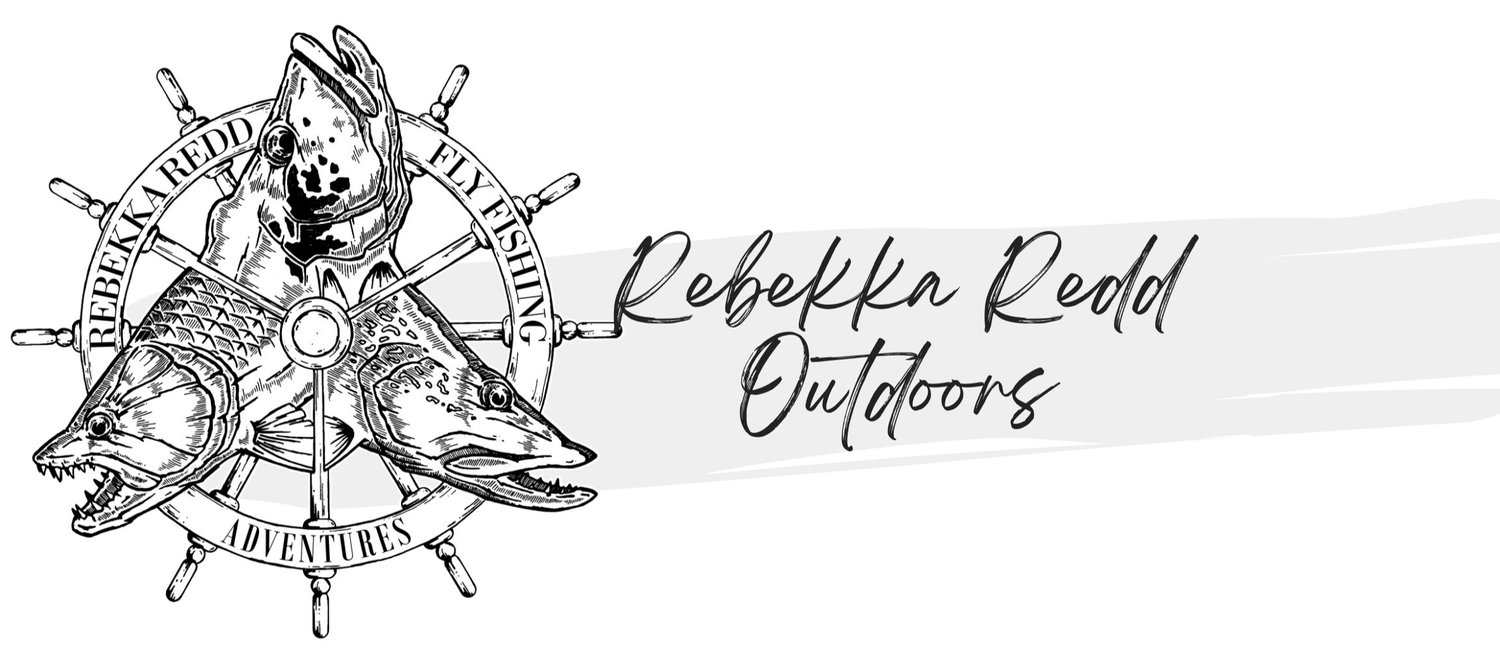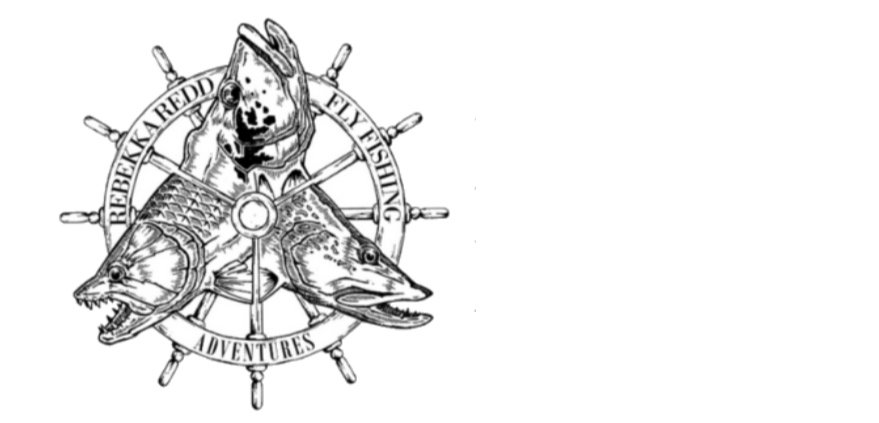Redd's Gear Guide for Brook Trout
Words and photos by R.Redd
Here is an expanded gear guide to help you get set up for fall time brook (and other trout) on the fly
Autumn is well underway, as I kicked off my waders, threw on a dry fleece, dry socks, and nearly collapsed into the driver's seat of my truck. Sitting there, I knew I had a great day, along with my fishing amigos. I watched my breath billow into the air as I let the truck warm up. I couldn’t help but think of the trout that were just in my eager hands. Having an entire spring and summer to fly fish, I must confess that fall is my favourite. It is perhaps the best time of the year to target hefty brook trout. There are a lot of reasons to love fall fishing, but you definitely must change up your game to be successful.
If you’ve been wanting to catch that trophy trout, now is a great time.
What’s so great about fall fishing?
Hunting, football, and other activities take more people off the water. Everything is a lot more peaceful on the water with less pressure on the fish. The fair weather is over, and many anglers hang up their gear.
Know and understand the waters you’ll fish in.
Having a solid understanding of the quarry and the water that the trout swim in is the foundation of understanding and forming an excellent strategy. While you might get lucky by pulling up to any old spot on a river and throwing a line, learning the areas trout prefer will increase your chances of catching fish.
When approaching a river for the first time, it is easy to become intimidated by the sheer amount of water. Before making your first cast, you should take a moment to "read" the creek, river, or lake that you are about to fish. This is the process of examining the stream above and below the surface and breaking it down into manageable sections where fish will likely be. Follow almost any stream as it carves its way through the landscape and you will notice a pattern of characteristics.
When fishing in the fall, be sure to avoid spawning beds (redds) in the river that harbor eggs or spawning fish territory. You can recognize them by the bright, clean gravel that's been turned over. In other words, it’s their nest with eggs, and so don't walk on them, and please don’t fish them.
Typically (but not strictly), coho spawn from September to October, pinks are from August to October, chinook are from August to October, and brook trout are from September to November. Lake trout spawn Oct. to Nov., whitefish spawn Oct. to Nov., Atlantics spawn Oct. to Nov., and lake run rainbows (steelhead) spawn Oct. to May. The exact run timing on any given lake or river system is unique and driven by a variety of factors that can include but are not limited to location (south vs north), water temps, water levels, flow and more.
Find out what they are eating, and you are half way home!
The typical method of fly fishing for trout is nymphing. using various insect patterns that are present in the rivers. I usually spend a few minutes checking out the food supply before starting to fish. This extra effort saves me a lot of frustration. Trout like to lie along the bottom of rivers in deep, dark pockets of water. There, they can wait until their lunch floats to them, mostly in the form of aquatic invertebrates. These invertebrates are often nymphs, or the larval stage of insects. And so, one way to catch trout is to use a fly called a nymph.
Casting streamers:
Streamers are flies meant to be fished below the surface of the water. They resemble minnows or other small baitfish, and they are often tied with a weighted head. When you fish a streamer, you cast across the river or against a structure in a lake. You draw the streamer back to you in small, smooth jerks, motioning the streamer along like a darting fish. Find structure, such as a sloping shoreline with rocks and cast to shore and strip the fly back in.
Wooly Buggers: This fly is probably one of the most versatile flies ever created. These flies imitate anything from large nymphs, such as stoneflies and salmon flies, to leeches and even small baitfish. These flies are hard for any species to resist, and thus it's probably a good idea to keep a good supply of these flies in different colours, sizes, and styles.
Egg patterns: I enjoy fishing nymphs over eggs. But using an egg pattern is also successful. There are salmon eggs floating in the river, and since rainbows and other trout are aggressive eaters, they gobble up the real eggs readily.
The technique commonly used is:
I typically use a method called "tight-lining," and it’s best used in small creeks and rivers. I use 2 nymphs (check your location's fishing regulations prior to doing this) about 7 to 12 inches apart, and I locate myself about a rod length across from the targeted water and slightly downstream. Roll cast flies upstream at a 45-degree angle, and raise the flyrod to remove any slack. With the rod tip high, lead the flies downstream on a gently taut line. Focus on the leader where it enters the water, and if it pauses or twitches, strike instantly! I set on any pause the line may have, as it’s likely a fish. When I fish bigger waters, I tend to put a "thingamabobber" or strike indicator on my leader. A strike indicator is a small floatation device which attaches to your leader to allow you to spot subtle bites or "takes" more easily. If you are at entry level and are daunted by the sheer amount of information that surrounds fly fishing, I truly hope you take your time and enjoy your new hobby step by step. Like any game of skill, fly fishing requires practice and the building of muscle memory. from casting to presentation of the fly.
The Gear Guide :
ROD: 4-piece rod, 9 ft in length, ranging in 5 to 7 weight.
My favorite is a 7-weight rod, I can target a variety of trout and cast drys to heavier streamers with ease.
REEL: Smooth drag reel that matches the rod weight. IE: a 5 wt rod needs a 5 weight reel, or a 7 wt needs a 7 wt reel.
LINE: A floating line with a long tapered belly will deliver small fly’s well. For streamers a short tapered belly is great. For most lakes, a full sinking line is best suited and will get the streamer, muddler or more down to the fish fast.
Leader/tippet: 5x to 4x is standard for most trout. The bigger the fish you’re targeting, perhaps go up to 3x (stronger). A typical good tapered leader for hefty trout should be 8 to 10 lb test.
Flies: muddler minnow, clouser minnow, crayfish, bunny leech, whoolly bugger, parachute adams, elk hair caddis, hare's ear, pheasant tail nymph, san Juan worm, articulated hopper, soft hackle. These flies should give you an idea of the tasty morsels you should keep in your trout box.
Don't forget to crimp your barb. This is mandatory for some lakes. Purchase some "thingamabobbers", aka glorified bobbers, for your line. This is a good addition for drifting a nymph set up.
Extra tips:
Mind your shadow
When fishing for trout, remember to keep the sun at your back and make your approach. Especially early and late in the day. Trout lack eyelids, and don’t like looking into the sun. Put the sun behind you, but be mindful of your shadow and slowly sneak up on your targeted trout.
Down current hook set
Trout face almost 100% of the time into the current. They eat bugs that are floating towards them. If a trout eats your fly that’s drifting towards it, why would you lift that fly away from its mouth (back up stream)?
Setting that hook down current is key to setting that tiny hook. If you are having a difficult time remembering the direction to set, and you find yourself lifting the rod back up stream, then my advice to you is to take a moment to observe the flow of the water and make your plan to set the hook down current in the same direction as the current flow.
Enjoy the sport and your time on the water this fall, figuring out those tricky trout!


